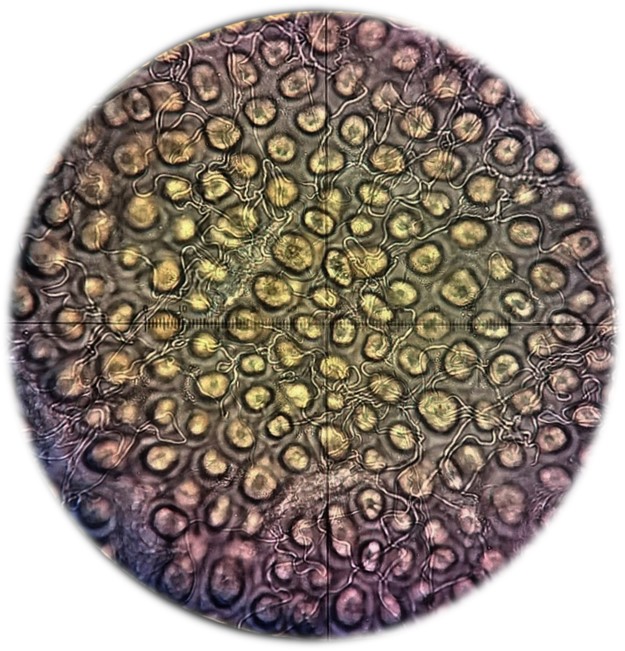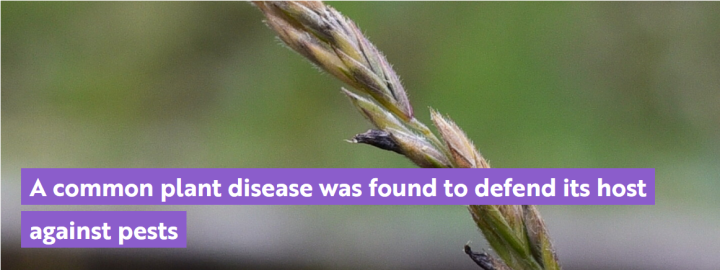Press release about Miika`s recent paper in Frontiers in Microbiology
A common plant disease was found to defend its host against pests
Scientists from University of Turku observed that ergot, a common plant disease on rye, defended its host plant chemically against grass feeding insects. The ergot disease in grains spoils the yield and causes seed loss to the plant. Based on this, it is classified as harmful from the human perspective. A new study states that the ergot appears to be a beneficial protector for its host plant capable of even increasing plant fitness.
On an experimental field at the University of Turku Subarctic research station Kevo, the research team studied fungal symbionts of grasses and their effects on plant biotic threats such as herbivorous aphids and ergot disease.
In the study, scientists used a widely distributed grass species, red fescue, and its fungal endophyte in the genus Epichloë. Fungal endophytes are fungi living entirely or part of their life cycle inside their host plants. This symbiotic relationship is commonly described as defensive mutualism which is characterized by plants providing nutrients to the fungus in exchange for protection against herbivory.
– Epichloë fungi are largely depending on their host plant for reproduction via the plant seeds. The fungal hyphae grows inside the plant up into the developing seeds, where it is spread to the developing new plant individuals. An endophyte like this would not survive without its host plant, which is why the plant wellbeing is in the interest of the symbiotic fungus, explains doctoral candidate Miika Laihonen.

Endophyte symbiosis increased the ergot infections of plant seeds – but the plant might benefit
The team observed whether the fungal endophyte affected the occurrence of herbivorous insects and fungal ergot infections in the study plants. The ergot fungus causes the ergot disease in grasses, including cereals. Thereby, the plant loses few of its seeds to the disease. The ergot-contaminated grain is toxic to humans and the ergot fungus is an unwelcomed guest on farmlands.
The researchers found that pest insect occurrence was not directly affected by the fungal endophyte but the ergot was more commonly detected on the plants with a fungal endophyte. Further analyses revealed that aphids rarely colonized plants infected by the ergot fungus. Thus, the endophyte indirectly repelled aphid herbivores by promoting ergot symbiosis. This was supported by the chemical analysis of the plants.
– Our first impression was that the fungal endophyte was harmful for the plant as it increased the probability of the plant getting infected by the ergot fungus. When we realized that the aphids avoided the ergot, we saw the results in a new light. Possibly the benefits of the ergot outweight the harms, Laihonen states.
This is not the only time the ergot was found to repel animals in nature. An earlier study found that grazing sheep were avoiding feeding the inflorescences from plants that were infected by ergot. Thus, hosting the ergot fungus provides protection for the majority of viable plant seeds and may ultimately be a fitness advantage for the plant and the associated Epichloë endophyte.
– As humans, we have a natural tendency to judge the organisms from our own point of view. However, by doing so, we can miss a bigger picture. We classify the ergot fungus as a harmful plant pathogen because that is what it is for us. For the plant though, it can be a savior: by occupying very few seeds, the ergot can safeguard the rest of the next plant generation, explains Laihonen.
Link to press release
Link to publication: Laihonen et al., 2022
